Source:- Google.com.pk
Oil Painting Reproductions Biography
Oil painting is the process of painting with pigments that are bound with a medium of drying oil—especially in early modern Europe, linseed oil. Often an oil, such as linseed, was boiled with a resin, such as pine resin or even frankincense; these were called 'varnishes' and were prized for their body and gloss. Other oils occasionally used include poppyseed oil, walnut oil, and safflower oil. These oils confer various properties to the oil paint, such as less yellowing or different drying times. Certain differences are also visible in the sheen of the paints depending on the oil. Painters often use different oils in the same painting depending on specific pigments and effects desired. The paints themselves also develop a particular consistency depending on the medium.
Although oil paint was first used for the Buddhist Paintings by Indian and Chinese painters in western Afghanistan sometime between the fifth and ninth centuries,[citation needed] it did not gain popularity until the 15th century. Its practice may have migrated westward during the Middle Ages. Oil paint eventually became the principal medium used for creating artworks as its advantages became widely known. The transition began with Early Netherlandish painting in northern Europe, and by the height of the Renaissance oil painting techniques had almost completely replaced tempera paints in the majority of Europe.
In recent years, water miscible oil paint has come to prominence, to some extent replacing the usage of traditional oils. Water soluble paints contain an emulsifier which allows them to be thinned with water (rather than with paint thinner), and allows very fast drying times (1–3 days) when compared with traditional oils (1–3 weeks).
Contents [hide]
1 Techniques
2 History
3 Ingredients
4 Supports for oil painting
5 Process
6 Examples of famous works
7 See also
8 References
[edit]Techniques
Self portrait, at work, Anders Zorn, 1897
Traditional oil painting techniques often begin with the artist sketching the subject onto the canvas with charcoal or thinned paint. Oil paint is usually mixed with linseed oil, artist grade mineral spirits or other solvents to create a thinner, faster or slower drying paint. Because these solvents thin the oil in the paint, they can also be used to clean paint brushes. A basic rule of oil paint application is 'fat over lean'. This means that each additional layer of paint should contain more oil than the layer below to allow proper drying. If each additional layer contains less oil, the final painting will crack and peel. There are many other media that can be used in oil painting, including cold wax, resins, and varnishes. These additional media can aid the painter in adjusting the translucency of the paint, the sheen of the paint, the density or 'body' of the paint, and the ability of the paint to hold or conceal the brushstroke. These variables are closely related to the expressive capacity of oil paint.
Traditionally, paint was transferred to the painting surface using paint brushes, but there are other methods, including using palette knives and rags. Oil paint remains wet longer than many other types of artists' materials, enabling the artist to change the color, texture or form of the figure. At times, the painter might even remove an entire layer of paint and begin anew. This can be done with a rag and some turpentine for a certain time while the paint is wet, but after a while, the hardened layer must be scraped. Oil paint dries by oxidation, not evaporation, and is usually dry to the touch within a span of two weeks. It is generally dry enough to be varnished in six months to a year. Art conservators do not consider an oil painting completely dry until it is 60 to 80 years old.[citation needed]
[edit]History
The Francesco St Jerome by Palma il Giovane, circa 1590. A rare example of oil painting on copper.
Although the history of tempera and related media in Europe indicates that oil painting was discovered there independently, there is evidence that oil painting was used earlier in Afghanistan.[1][2][3][4] Surfaces like shields — both those used in tournaments and those hung as decorations — were more durable when painted in oil-based media than when painted in the traditional tempera paints.
Most Renaissance sources, in particular Vasari, credited northern European painters of the 15th century, and Jan van Eyck in particular, with the "invention" of painting with oil media on wood panel. However, Theophilus (Roger of Helmarshausen?) clearly gives instructions for oil-based painting in his treatise, On Various Arts, written in 1125. At this period it was probably used for painting sculptures, carvings and wood fittings, perhaps especially for outdoor use. Early Netherlandish painting in the 15th century was, however, the first to make oil the usual painting medium, and explore the use of layers and glazes, followed by the rest of Northern Europe, and only then Italy. Early works were still panel paintings on wood, but around the end of the 15th century canvas became more popular, as it was cheaper, easier to transport, and allowed larger works. Venice, where sail-canvas was easily available, led the move. The popularity of oil spread through Italy from the North, starting in Venice in the late 15th century. By 1540 the previous method for painting on panel, tempera, had become all but extinct, although Italians continued to use fresco for wall paintings, which was more difficult in Northern climates.
[edit]Ingredients
Flax seed is the source of linseed oil.
The linseed oil itself comes from the flax seed, a common fiber crop. It is interesting to note that linen, an important "support" for oil painting (see below) also comes from the flax plant. Safflower oil, or the more traditional walnut or poppyseed oil, are sometimes used in formulating lighter colors such as white because it "yellows" less on drying than does linseed oil, but it has the slight drawback of drying more slowly.
Recent advances in chemistry have produced modern water miscible oil paints that can be used with and cleaned up with water. Small alterations in the molecular structure of the oil creates this water miscible property.
A still-newer type of paint, heat-set oils, remain liquid until heated to 265–280 °F (130–138 °C) for about 15 minutes. Since the paint never dries otherwise, cleanup is not needed (except when one wants to use a different color and the same brush). Although not technically true oils (the medium is an unidentified "non-drying synthetic oily liquid, imbedded with a heat sensitive curing agent"), the paintings resemble oil paintings and are usually shown as oil paintings.
[edit]Supports for oil painting
Splined canvas
Traditional artists' canvas is made from linen, but less expensive cotton fabric has gained popularity. The artist first prepares a wooden frame called a "stretcher" or "strainer". The difference between the first and second is that stretchers are slightly adjustable, while strainers are rigid and lack adjustable corner notches. The canvas is then pulled across the wooden frame and tacked or stapled tightly to the back edge. Then, the artist applies a "size" to isolate the canvas from the acidic qualities of the paint. Traditionally, the canvas was coated with a layer of animal glue (size), (modern painters will use rabbit skin glue) and primed with lead white paint, sometimes with added chalk. Panels were prepared with a gesso, a mixture of glue and chalk.
Modern acrylic "gesso" is made of titanium dioxide with an acrylic binder. It is frequently used on canvas, whereas real gesso is not suitable for that application. The artist might apply several layers of gesso, sanding each smooth after it has dried. Acrylic gesso is very difficult to sand. One manufacturer makes a sandable acrylic gesso, but it is intended for panels only, not canvas. It is possible to tone the gesso to a particular color, but most store-bought gesso is white. The gesso layer will tend to draw the oil paint into the porous surface, depending on the thickness of the gesso layer. Excessive or uneven gesso layers are sometimes visible in the surface of finished paintings as a change in the layer that's not from the paint.
Standard sizes for oil paintings were set in France in the 19th century. The standards were used by most artists, not only the French, as it was – and evidently still is – supported by the main suppliers of artist materials. The main separation from size 0 (toile de 0) to size 120 (toile de 120) is divided in separate runs for figures (figure), landscapes (paysage) and marines (marine) which more or less keep the diagonal. Thus a 0 figure corresponds in height with a paysage 1 and a marine 2.[5]
Although surfaces like linoleum, wooden panel, paper, slate, pressed wood, and cardboard have been used, the most popular surface since the 16th century has been canvas, although many artists used panel through the 17th century and beyond. Panel is more expensive, heavier, harder to transport, and prone to warp or split in poor conditions. For fine detail, however, the absolute solidity of a wooden panel gives an advantage.
[edit]Process
A palette
The artist might sketch an outline of their subject prior to applying pigment to the surface. "Pigment" may be any number of natural substances with color, such as sulphur for yellow or cobalt for blue. The pigment is mixed with oil, usually linseed oil but other oils may be used as well. The various oils dry differently, creating assorted effects.
Traditionally, artists mixed their own paints from raw pigments that they often ground themselves and medium. This made portability difficult and kept most painting activities confined to the studio. This changed in the late 1800s, when oil paint in tubes became widely available. Artists could mix colors quickly and easily, which enabled, for the first time, relatively convenient plein air (outdoor) painting (a common approach in French Impressionism).
The artist most often uses a brush to apply the paint. Brushes are made from a variety of fibers to create different effects. For example, brushes made with hog's bristle might be used for bolder strokes and impasto textures. Fitch hair and mongoose hair brushes are fine and smooth, and thus answer well for portraits and detail work. Even more expensive are red sable brushes (weasel hair). The finest quality brushes are called kolinsky sable; these brush fibers are taken from the tail of the Siberian mink. This hair keeps a superfine point, has smooth handling, and good memory (it returns to its original point when lifted off the canvas); this is known to artists as a brush's "snap."
In the past few decades, many synthetic brushes have come on the market. These are very durable and can be quite good, as well as cost efficient. Floppy fibers with no snap, such as squirrel hair, are generally not used by oil painters. Sizes of brushes also are widely varied and used for different effects. For example, a "round" is a pointed brush used for detail work. "Flat" brushes are used to apply broad swaths of color. "Bright" is a flat with shorter brush hairs. "Filbert" is a flat with rounded corners. "Egbert" is a very long "Filbert" and is rare. The artist might also apply paint with a palette knife, which is a flat, metal blade. A palette knife may also be used to remove paint from the canvas when necessary. A variety of unconventional tools, such as rags, sponges, and cotton swabs, may be used. Some artists even paint with their fingers.
Tubes of paint
Most artists paint in layers, which is simply called "Indirect Painting". The method was first perfected through an adaptation of the egg tempera painting technique and was applied by the Flemish painters in Northern Europe with pigments ground in linseed oil. More recently, this approach has been called the "Mixed Technique" or "Mixed Method". The first coat (also called "underpainting") is laid down, often painted with egg tempera or turpentine-thinned paint. This layer helps to "tone" the canvas and to cover the white of the gesso. Many artists use this layer to sketch out the composition. This first layer can be adjusted before moving forward, an advantage over the 'cartooning' method used in Fresco technique. After this layer dries, the artist might then proceed by painting a "mosaic" of color swatches, working from darkest to lightest. The borders of the colors are blended together when the "mosaic" is completed. This mosaic layer is then left to dry before applying details.
Artists in later periods, such as the impressionist era, often used this Wet-on-wet method more widely, blending the wet paint on the canvas without following the Renaissance-era approach of layering and glazing. This method is also called "alla prima". This method was created due to the advent of painting outdoors, instead of inside a studio. While outside, an artist did not have the time to let each layer of paint dry before adding a new layer. Several contemporary artists use a blend of both techniques, which can add bold color (wet-on-wet) as well as the depth of layers through glazing.
When the image is finished and has dried for up to a year, an artist often seals the work with a layer of varnish that is typically made from damar gum crystals dissolved in turpentine. Such varnishes can be removed without disturbing the oil painting itself, to enable cleaning and conservation. Some contemporary artists decide not to varnish their work, preferring that the surfaces remain varnish-free.
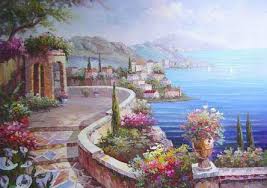

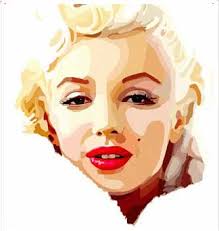
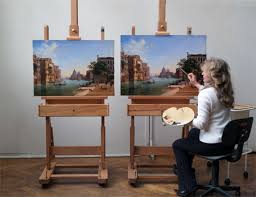
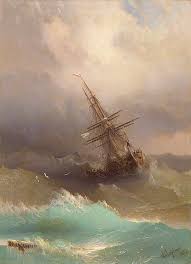
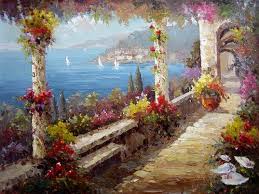


Oil Painting Reproductions Biography
Oil painting is the process of painting with pigments that are bound with a medium of drying oil—especially in early modern Europe, linseed oil. Often an oil, such as linseed, was boiled with a resin, such as pine resin or even frankincense; these were called 'varnishes' and were prized for their body and gloss. Other oils occasionally used include poppyseed oil, walnut oil, and safflower oil. These oils confer various properties to the oil paint, such as less yellowing or different drying times. Certain differences are also visible in the sheen of the paints depending on the oil. Painters often use different oils in the same painting depending on specific pigments and effects desired. The paints themselves also develop a particular consistency depending on the medium.
Although oil paint was first used for the Buddhist Paintings by Indian and Chinese painters in western Afghanistan sometime between the fifth and ninth centuries,[citation needed] it did not gain popularity until the 15th century. Its practice may have migrated westward during the Middle Ages. Oil paint eventually became the principal medium used for creating artworks as its advantages became widely known. The transition began with Early Netherlandish painting in northern Europe, and by the height of the Renaissance oil painting techniques had almost completely replaced tempera paints in the majority of Europe.
In recent years, water miscible oil paint has come to prominence, to some extent replacing the usage of traditional oils. Water soluble paints contain an emulsifier which allows them to be thinned with water (rather than with paint thinner), and allows very fast drying times (1–3 days) when compared with traditional oils (1–3 weeks).
Contents [hide]
1 Techniques
2 History
3 Ingredients
4 Supports for oil painting
5 Process
6 Examples of famous works
7 See also
8 References
[edit]Techniques
Self portrait, at work, Anders Zorn, 1897
Traditional oil painting techniques often begin with the artist sketching the subject onto the canvas with charcoal or thinned paint. Oil paint is usually mixed with linseed oil, artist grade mineral spirits or other solvents to create a thinner, faster or slower drying paint. Because these solvents thin the oil in the paint, they can also be used to clean paint brushes. A basic rule of oil paint application is 'fat over lean'. This means that each additional layer of paint should contain more oil than the layer below to allow proper drying. If each additional layer contains less oil, the final painting will crack and peel. There are many other media that can be used in oil painting, including cold wax, resins, and varnishes. These additional media can aid the painter in adjusting the translucency of the paint, the sheen of the paint, the density or 'body' of the paint, and the ability of the paint to hold or conceal the brushstroke. These variables are closely related to the expressive capacity of oil paint.
Traditionally, paint was transferred to the painting surface using paint brushes, but there are other methods, including using palette knives and rags. Oil paint remains wet longer than many other types of artists' materials, enabling the artist to change the color, texture or form of the figure. At times, the painter might even remove an entire layer of paint and begin anew. This can be done with a rag and some turpentine for a certain time while the paint is wet, but after a while, the hardened layer must be scraped. Oil paint dries by oxidation, not evaporation, and is usually dry to the touch within a span of two weeks. It is generally dry enough to be varnished in six months to a year. Art conservators do not consider an oil painting completely dry until it is 60 to 80 years old.[citation needed]
[edit]History
The Francesco St Jerome by Palma il Giovane, circa 1590. A rare example of oil painting on copper.
Although the history of tempera and related media in Europe indicates that oil painting was discovered there independently, there is evidence that oil painting was used earlier in Afghanistan.[1][2][3][4] Surfaces like shields — both those used in tournaments and those hung as decorations — were more durable when painted in oil-based media than when painted in the traditional tempera paints.
Most Renaissance sources, in particular Vasari, credited northern European painters of the 15th century, and Jan van Eyck in particular, with the "invention" of painting with oil media on wood panel. However, Theophilus (Roger of Helmarshausen?) clearly gives instructions for oil-based painting in his treatise, On Various Arts, written in 1125. At this period it was probably used for painting sculptures, carvings and wood fittings, perhaps especially for outdoor use. Early Netherlandish painting in the 15th century was, however, the first to make oil the usual painting medium, and explore the use of layers and glazes, followed by the rest of Northern Europe, and only then Italy. Early works were still panel paintings on wood, but around the end of the 15th century canvas became more popular, as it was cheaper, easier to transport, and allowed larger works. Venice, where sail-canvas was easily available, led the move. The popularity of oil spread through Italy from the North, starting in Venice in the late 15th century. By 1540 the previous method for painting on panel, tempera, had become all but extinct, although Italians continued to use fresco for wall paintings, which was more difficult in Northern climates.
[edit]Ingredients
Flax seed is the source of linseed oil.
The linseed oil itself comes from the flax seed, a common fiber crop. It is interesting to note that linen, an important "support" for oil painting (see below) also comes from the flax plant. Safflower oil, or the more traditional walnut or poppyseed oil, are sometimes used in formulating lighter colors such as white because it "yellows" less on drying than does linseed oil, but it has the slight drawback of drying more slowly.
Recent advances in chemistry have produced modern water miscible oil paints that can be used with and cleaned up with water. Small alterations in the molecular structure of the oil creates this water miscible property.
A still-newer type of paint, heat-set oils, remain liquid until heated to 265–280 °F (130–138 °C) for about 15 minutes. Since the paint never dries otherwise, cleanup is not needed (except when one wants to use a different color and the same brush). Although not technically true oils (the medium is an unidentified "non-drying synthetic oily liquid, imbedded with a heat sensitive curing agent"), the paintings resemble oil paintings and are usually shown as oil paintings.
[edit]Supports for oil painting
Splined canvas
Traditional artists' canvas is made from linen, but less expensive cotton fabric has gained popularity. The artist first prepares a wooden frame called a "stretcher" or "strainer". The difference between the first and second is that stretchers are slightly adjustable, while strainers are rigid and lack adjustable corner notches. The canvas is then pulled across the wooden frame and tacked or stapled tightly to the back edge. Then, the artist applies a "size" to isolate the canvas from the acidic qualities of the paint. Traditionally, the canvas was coated with a layer of animal glue (size), (modern painters will use rabbit skin glue) and primed with lead white paint, sometimes with added chalk. Panels were prepared with a gesso, a mixture of glue and chalk.
Modern acrylic "gesso" is made of titanium dioxide with an acrylic binder. It is frequently used on canvas, whereas real gesso is not suitable for that application. The artist might apply several layers of gesso, sanding each smooth after it has dried. Acrylic gesso is very difficult to sand. One manufacturer makes a sandable acrylic gesso, but it is intended for panels only, not canvas. It is possible to tone the gesso to a particular color, but most store-bought gesso is white. The gesso layer will tend to draw the oil paint into the porous surface, depending on the thickness of the gesso layer. Excessive or uneven gesso layers are sometimes visible in the surface of finished paintings as a change in the layer that's not from the paint.
Standard sizes for oil paintings were set in France in the 19th century. The standards were used by most artists, not only the French, as it was – and evidently still is – supported by the main suppliers of artist materials. The main separation from size 0 (toile de 0) to size 120 (toile de 120) is divided in separate runs for figures (figure), landscapes (paysage) and marines (marine) which more or less keep the diagonal. Thus a 0 figure corresponds in height with a paysage 1 and a marine 2.[5]
Although surfaces like linoleum, wooden panel, paper, slate, pressed wood, and cardboard have been used, the most popular surface since the 16th century has been canvas, although many artists used panel through the 17th century and beyond. Panel is more expensive, heavier, harder to transport, and prone to warp or split in poor conditions. For fine detail, however, the absolute solidity of a wooden panel gives an advantage.
[edit]Process
A palette
The artist might sketch an outline of their subject prior to applying pigment to the surface. "Pigment" may be any number of natural substances with color, such as sulphur for yellow or cobalt for blue. The pigment is mixed with oil, usually linseed oil but other oils may be used as well. The various oils dry differently, creating assorted effects.
Traditionally, artists mixed their own paints from raw pigments that they often ground themselves and medium. This made portability difficult and kept most painting activities confined to the studio. This changed in the late 1800s, when oil paint in tubes became widely available. Artists could mix colors quickly and easily, which enabled, for the first time, relatively convenient plein air (outdoor) painting (a common approach in French Impressionism).
The artist most often uses a brush to apply the paint. Brushes are made from a variety of fibers to create different effects. For example, brushes made with hog's bristle might be used for bolder strokes and impasto textures. Fitch hair and mongoose hair brushes are fine and smooth, and thus answer well for portraits and detail work. Even more expensive are red sable brushes (weasel hair). The finest quality brushes are called kolinsky sable; these brush fibers are taken from the tail of the Siberian mink. This hair keeps a superfine point, has smooth handling, and good memory (it returns to its original point when lifted off the canvas); this is known to artists as a brush's "snap."
In the past few decades, many synthetic brushes have come on the market. These are very durable and can be quite good, as well as cost efficient. Floppy fibers with no snap, such as squirrel hair, are generally not used by oil painters. Sizes of brushes also are widely varied and used for different effects. For example, a "round" is a pointed brush used for detail work. "Flat" brushes are used to apply broad swaths of color. "Bright" is a flat with shorter brush hairs. "Filbert" is a flat with rounded corners. "Egbert" is a very long "Filbert" and is rare. The artist might also apply paint with a palette knife, which is a flat, metal blade. A palette knife may also be used to remove paint from the canvas when necessary. A variety of unconventional tools, such as rags, sponges, and cotton swabs, may be used. Some artists even paint with their fingers.
Tubes of paint
Most artists paint in layers, which is simply called "Indirect Painting". The method was first perfected through an adaptation of the egg tempera painting technique and was applied by the Flemish painters in Northern Europe with pigments ground in linseed oil. More recently, this approach has been called the "Mixed Technique" or "Mixed Method". The first coat (also called "underpainting") is laid down, often painted with egg tempera or turpentine-thinned paint. This layer helps to "tone" the canvas and to cover the white of the gesso. Many artists use this layer to sketch out the composition. This first layer can be adjusted before moving forward, an advantage over the 'cartooning' method used in Fresco technique. After this layer dries, the artist might then proceed by painting a "mosaic" of color swatches, working from darkest to lightest. The borders of the colors are blended together when the "mosaic" is completed. This mosaic layer is then left to dry before applying details.
Artists in later periods, such as the impressionist era, often used this Wet-on-wet method more widely, blending the wet paint on the canvas without following the Renaissance-era approach of layering and glazing. This method is also called "alla prima". This method was created due to the advent of painting outdoors, instead of inside a studio. While outside, an artist did not have the time to let each layer of paint dry before adding a new layer. Several contemporary artists use a blend of both techniques, which can add bold color (wet-on-wet) as well as the depth of layers through glazing.
When the image is finished and has dried for up to a year, an artist often seals the work with a layer of varnish that is typically made from damar gum crystals dissolved in turpentine. Such varnishes can be removed without disturbing the oil painting itself, to enable cleaning and conservation. Some contemporary artists decide not to varnish their work, preferring that the surfaces remain varnish-free.
Oil Painting Reproductions
Oil Painting Reproductions
Oil Painting Reproductions
Oil Painting Reproductions
Oil Painting Reproductions
Oil Painting Reproductions
Oil Painting Reproductions
Oil Painting Reproductions
Oil Painting Reproductions
Oil Painting Reproductions
Oil Painting Reproduction Fine Art Gallery-Handmade Oil Painting Process
No comments:
Post a Comment